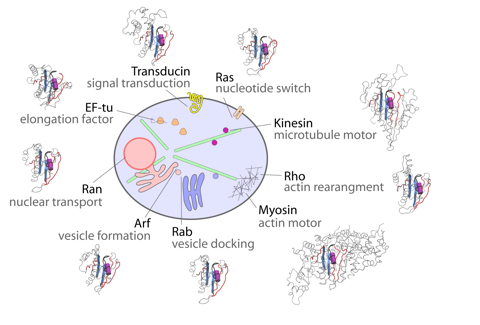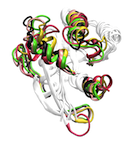evolution
Molecular Motors & Molecular Switches
29/09/14 14:53
Molecular motors and switches comprise a set of related nucleotide binding proteins that lie at the heart of life's processes, from the division and growth of cells to the muscular movement of organisms. They represent attractive targets for drug design as their aberrant function is associated with many diseases including cancer.
Our research aims to decipher the physical mechanisms by which these fascinating natural nanomachines function and how their dysfunction is related to disease. Our recent findings on these systems include how to rationally engineer faster velocity molecular motors and inhibit molecular switches that are malfunctioning in more than 20% of all human cancers.
Our research aims to decipher the physical mechanisms by which these fascinating natural nanomachines function and how their dysfunction is related to disease. Our recent findings on these systems include how to rationally engineer faster velocity molecular motors and inhibit molecular switches that are malfunctioning in more than 20% of all human cancers.

Conformational Selection & Allostery in Molecular Switches
29/09/14 14:53

Our atomistic molecular simulations indicate that these enzymes harbor an intrinsic susceptibility to sample multiple conformational states regardless of the bound nucleotide. These results indicate that conformational changes in these enzymes may be best described by a population-shift mechanism rather than by the popular ligand induced-fit on/off switch model. Read More...
